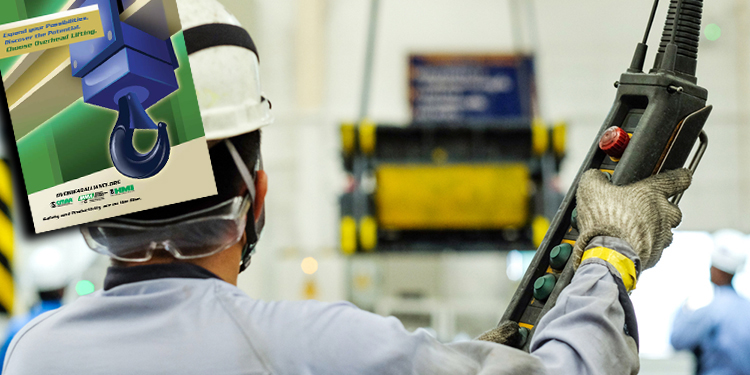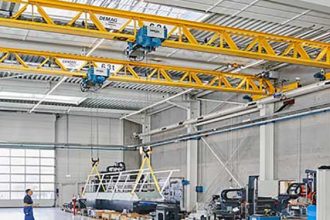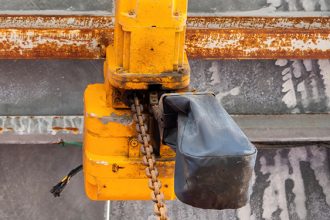Cut Product Damage And Associated Costs With Overhead Lifting Solutions

This is the fifth in a series of posts detailing 13 reasons why overhead lifting and handling technologies — specifically cranes, hoists, and monorails — can improve a manufacturing or distribution operation’s efficiency, productivity, safety, and sustainability. Read more in the free Overhead Alliance publication, “Expand Your Possibilities. Discover the Potential. Choose Overhead Lifting.”
When was the last time a product got damaged in your distribution center, warehouse, or manufacturing facility by a traditional, floor-based vehicle, such as a forklift? Whether the damage occurred when the product was being lifted, lowered, or transported—or simply run into while resting static on the floor or stored in pallet rack—that destruction has a cost. Actually, it has a lot of costs, including:
- The loss of the product.
- The expenses associated with repairing or scrapping the damaged product.
- The time lost in storing or manufacturing it.
- The dissatisfaction of the customer who expected to receive an intact product in a certain timeframe—or who receives a damaged product—and the potential loss of that customer.
- The potential damage to the facility or other equipment used within it if the product is marred by an impact with another structure or piece of machinery.
- The associated damage to the floor-based vehicle as a result of the collision.
There is another option: overhead lifting solutions, such as cranes, hoists, and monorails. Offered as an alternative to floor-based product movement, overhead handling technologies can significantly reduce the risk of damage to items as they are being lifted, lowered, transported, or simply sitting in storage. Cutting the risk of product destruction also reduces the potential negative impact on the bottom line.
Overhead handling systems cut product damage in three ways:
- By avoiding obstacles. Motor vehicles moving loads on the floor must maneuver through narrow spaces, negotiate tight corners, avoid building structures such as columns and pallet rack, and be aware of blind spots and pedestrians. All of those twists and turns increases the risk of a collision. Conversely, overhead handling equipment enables direct-path transportation over any obstacles that may impede the straight-line path of a floor-based load transport vehicle. Products literally glide through the air, avoiding potential impacts and subsequent damage because they are lifted and moved through the clear space overhead.
- Through controlled movement. Unlike motorized, floor-based load handlers, overhead lifting systems automatically self-center each load as it is raised in the air. This reduces the chance of the product tipping over in transport, or colliding with walls, structural supports, or other machinery and equipment. Further, overhead cranes, hoists, and monorails are equipped with controllers that employ soft start features. This function ensures gentle initiation of product lifting and movement. Overhead systems also sport multiple or variable speed options for optimized control as the load is transported to its destination.
- With load-specific attachments. Not only can monorails, cranes and hoists themselves be customized to each unique application, but there are also load-specific below the hook devices (also sometimes called end effectors). These attachments are used to optimize the handling of different types of products. There are a broad range of designs, styles, and types, including C hooks, gripping lifters, mechanical lifters, vacuum lifters, sheet lifters, lifting beams, magnets, slings, drum turners, and more.
Interested in discovering other ways that overhead lifting solutions can have a positive impact on your bottom line? Find another 12 ways these technologies improve manufacturing and distribution productivity, safety and throughput in “Expand Your Possibilities. Discover the Potential. Choose Overhead Lifting.” The free publication is made available by MHI’s Overhead Alliance, which includes the Crane Manufacturers Association of America (CMAA), the Hoist Manufacturers Institute (HMI), and the Monorail Manufacturers Association (MMA).



